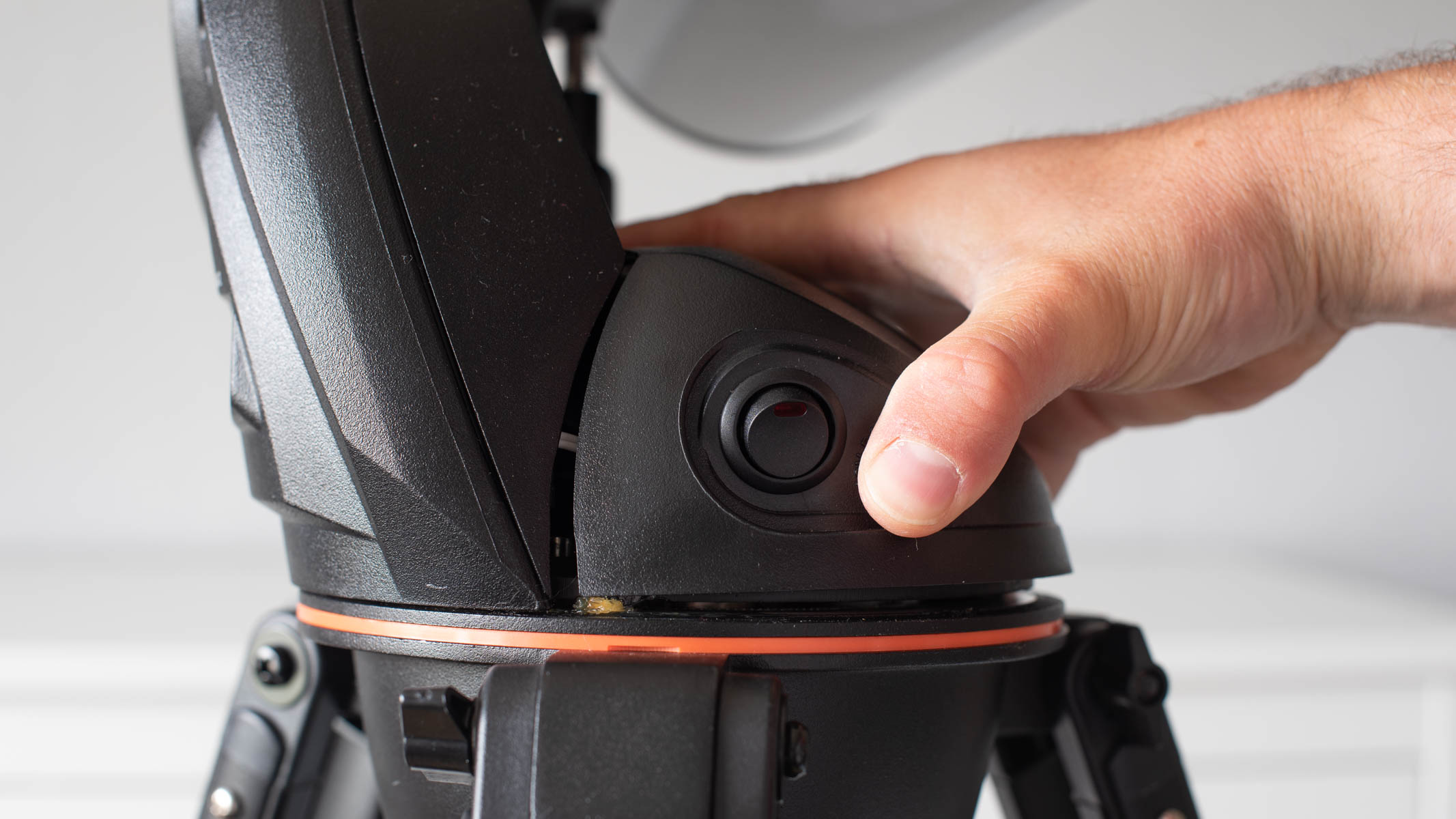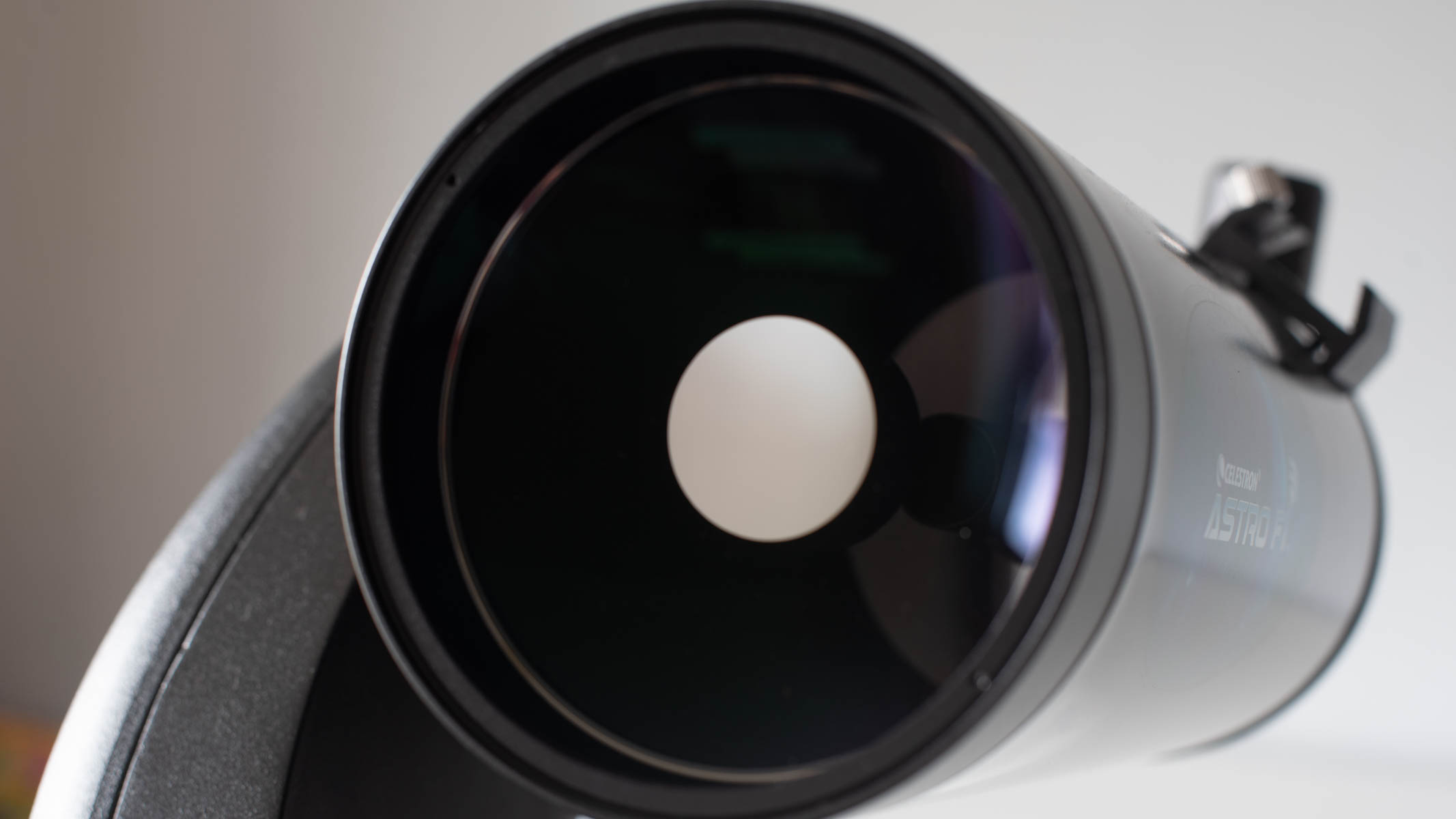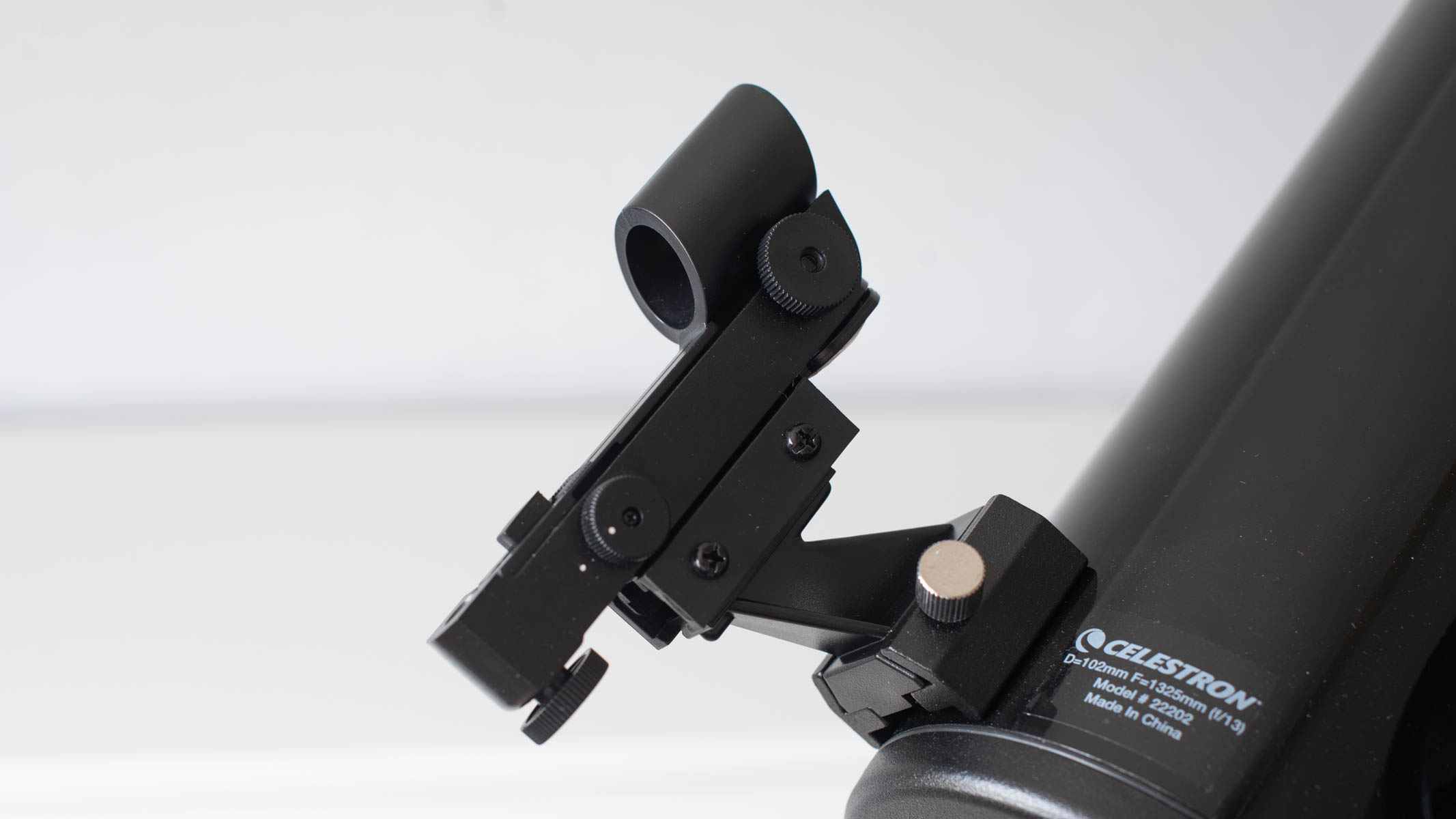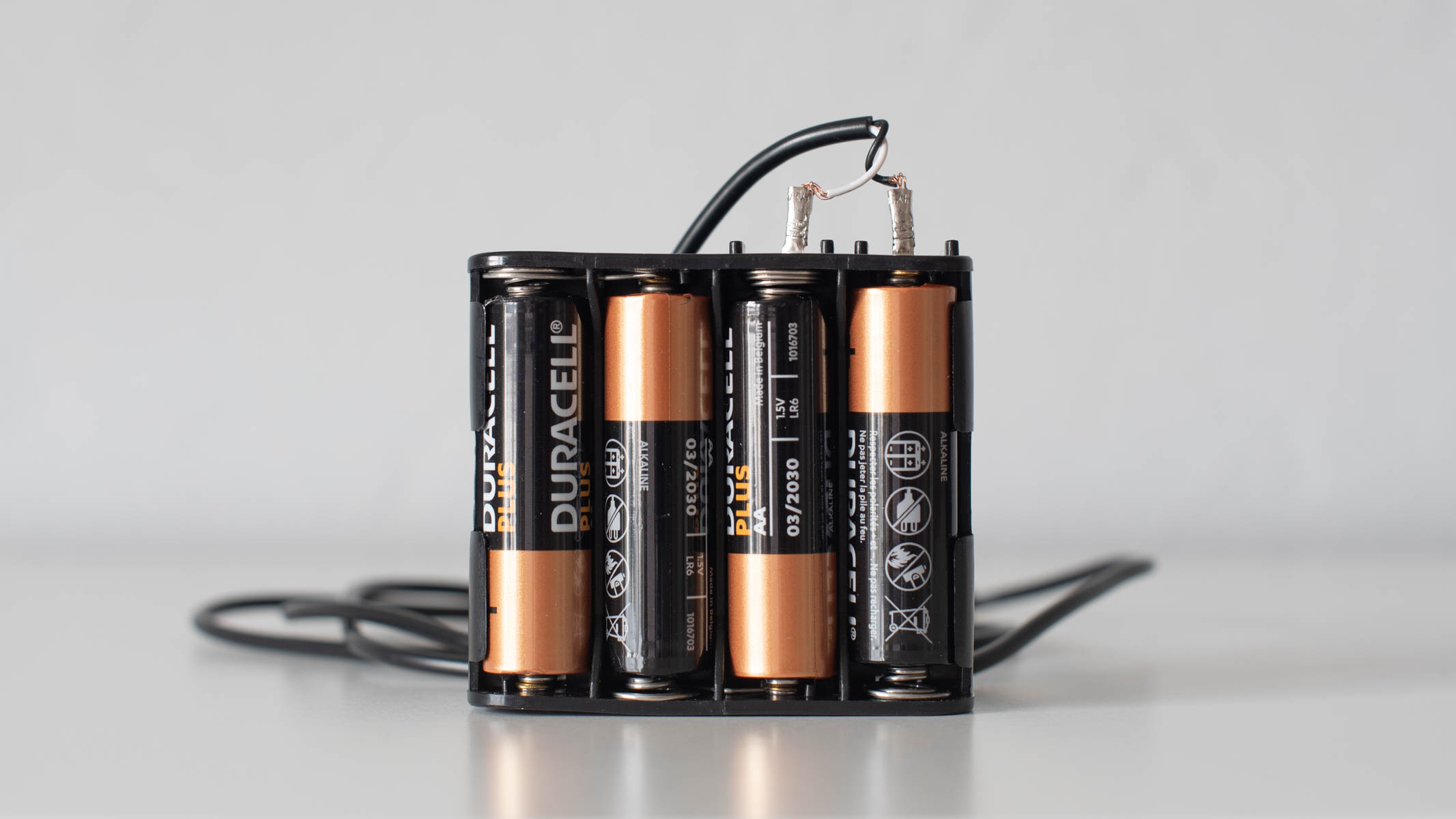Live Science Verdict
Wrapped up in a compact package thanks to the Maksutov-Cassegrain catadioptric, the Celestron Astro Fi 102 is a no-frills telescope best suited toward lunar and planetary observing. The motorized mount may take some time for beginners to get set up but it comes in at a reasonable price offering fair views of the night sky.
Pros
- +
Simple design is relatively easy to set up
- +
Excellent for budget-conscious
- +
Lightweight and easily portable
Cons
- -
Optical clarity isn’t the best
- -
Tripod feels a bit flimsy
- -
Build quality could use some work
Why you can trust Live Science
Beginners and young, budding astronomers both have a requirement for specific characteristics when looking for a telescope. Often, they need something with a lower budget that offers good general viewing opportunities across a range of celestial objects. The Celestron Astro Fi 102 offers all this tied up in a small package that’s not too cumbersome to transport and is easy to set up. And on top of that, it’s a motorized go-to telescope that has integrated Wi-Fi and works with a smartphone so there’s no need for that fiddly hand controller or specific native language/knowledge that comes with other go-to telescopes that don’t sync with smart devices.
Due to the Maksutov-Cassegrain design this catadioptric telescope is lightweight and quick to set up on location. While there is some general softness around the edge of the image circle, this is what you’d typically expect from a telescope of this type and price.
Overall, we think this is a good starter telescope that can have observers spinning around on the motorized mount all night long observing the night sky, but build quality and longevity is questionable when compared to the best telescopes out there.
Celestron Astro Fi 102: Design
- Lightweight is ideal for new or younger skywatchers
- Build quality isn’t great and casing feels flimsy
- Tripod isn’t too sturdy but accessory tray improves use
The first thing we noticed when setting up the Celestron Astro Fi 102 is just how small it is. At just 6 lbs (2.7KG) this could easily be packed up into a backpack and taken out on a long hike to a dark sky spot. The dark, black tube and single fork arm is attractive and the tube slots right into the single fork arm mount via the CG-5 dovetail. One thing we’d like to see though, is a flat bottom to the fork arm similar to the Celestron NexStar 8SE which would make it easier to place down without a tripod.
The StarPointer red dot finderscope and star diagonal with accompanying eyepiece slots effortlessly into the tube and keeps all controls close to the tube to reduce the risk of knocking or bumping when in use, especially in dark conditions.
The plastic surround feels strong enough but we think it could be reinforced or sealed better where it connects to the baseplate on the fork arm. As you can see from the image a slight pull reveals the innards of the motorized plate and we’re not convinced it could withstand even a short shower without needing to cover it up.

Celestron Astro Fi 102: Performance
- Motorized function tricky to set up for beginners
- Fair views in the center of the image circle
- Good synchronization with smart devices
Views of the night sky are reasonable through the Astro Fi 102. There’s nothing groundbreaking here but it is a useful instrument for observing the craters on the moon and viewing the rings on Saturn. Synchronization to the SkyPortal app is quick and simple and the telescope can be used on a variety of smart devices including iPhone, iPad and Android smartphones. Slew rate was acceptable, and it did a good job of navigating the night sky quietly.
Get the world’s most fascinating discoveries delivered straight to your inbox.
The telescope provides good, clear views of planets but of course there is a little softness around the edges of the image circle which we’d expect at this price — only much more expensive Maksutov-Cassegrains provide a truly flat field with edge-to-edge sharpness. With a wide aperture of 102mm and a focal length of 1325mm the Astro Fi 102 has an impressive f/13 focal ratio offering bright views with minimal chromatic aberration. We think this telescope is particularly good for crater viewing on the moon which we did in midsummer in the northern hemisphere but we’d also recommend it for viewing nebulae and other deep sky objects if viewing conditions are dark enough.

Celestron Astro Fi 102 objective lens.

Celestron Astro Fi 102 star diagonal and eyepiece.

Celestron Astro Fi 102 finderscope.

Celestron Astro Fi 102 finderscope battery compartment.
Celestron Astro Fi 102: Functionality
- WiFi connection seems solid on Android device
- Minimal operation noise when slewing
- Simple controls make it a dream to use
The AA battery pack (which requires 8 AAs) has a neat little faux leather carry case with a handle that can be hooked onto the tripod or placed on the accessory tray. We did run into one issue though. When using the motorized mount the telescope will slew from one part of the sky to another, as expected, but if you’re not keeping an eye on proceedings the battery pack, which is plugged in via a 12V DC port, can get tangled around the mount and, as is the case when we used it, can fall off and break. While this is technically user error, we think that the battery pack (whose copper wires are loosely crimped into the frame) could be better constructed to ensure the wiring is protected when accidents like this do happen.

Celestron Astro Fi 102 power button.

Celestron Astro Fi 102 battery pack with AA batteries inside.

Celestron Astro Fi 102 battery pack attached to tripod.
This issue aside, the WiFi connection does seem solid and it holds synchronization on our Android device (Google Pixel 6 Pro) and works well with the SkyPortal app. New users should take heed of the manual’s suggestion to turn off the finderscope when not in use or risk running down the battery. It’s a little fiddly to change the battery, from opening the compartment with a small screwdriver (not supplied with the telescope we used) to pressing the little button battery into the slot. Once changed though the finderscope is solid and functional giving good operation through many uses.
There’s also a smartphone holder in the lens cap in the form of elasticated straps, but if you’re anything like the rest of us, you’ll just throw the phone on the accessory tray or in your pocket between operations.
Should I buy the Celestron Astro Fi 102?
If you’re just starting out in astronomy, or buying this for a younger stargazer who wants motorized control via a smartphone then the Celestron AstroFi 102 will serve you well. The build quality is lacking in places but if users do everything by the book then the telescope should last for years to come. Though, we’d recommend upgrading the tripod from the flimsy aluminum version supplied.
If this product isn’t for you
Skywatchers that want to keep observing for many years and need a telescope that grows with them (and have a bigger budget) may want to check out the Celestron NexStar 8SE which has legendary optical performance, a striking orange tube and flexibility for additional accessories to improve the use of the telescope. It also comes with a sturdier tripod and has the battery pack built into the baseplate of the single fork arm mount, instead of having a separate pack to connect. Prices vary, but typically start at around $1599.
Of course, this is a step up from a push-to telescope like the Celestron StarSense Explorer DX 102AZ which is fully manual but still aided by the smartphone app in terms of manual navigation of the night sky. Though, the StarSense Explorer is cheaper so it may suit those with tighter purse strings who want general good viewing without forking out for the fancy motor of the AstroFi 102.

Jase Parnell-Brookes is the Managing Editor for e-commerce for Live Science and Space. Previously the Channel Editor for Cameras and Skywatching at Space, Jase has been an editor and contributing expert across a wide range of publications since 2010. Based in the UK, they are also an award-winning photographer and educator winning the Gold Prize award in the Nikon Photo Contest 2018/19 and named Digital Photographer of the Year in 2014. After completing their Master's degree in 2011 and qualifying as a teacher in 2012, Jase has spent the last two decades studying and working in photography and publishing in multiple areas, and specializes in low light optics and camera systems.

